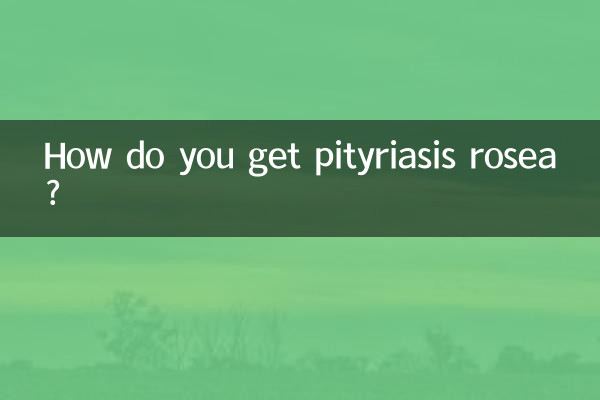How do you get pityriasis rosea?
Pityriasis rosea is a common self-limiting skin disease that affects adolescents and young adults. Although its etiology has not been fully understood, clinical observations and research indicate that multiple factors may be related to the onset of pityriasis rosea. Here’s a detailed breakdown of pityriasis rosea, including its causes, symptoms, diagnosis, and treatment.
1. Causes of pityriasis rosea

The specific cause of pityriasis rosea is unknown, but the following factors may be related to its onset:
| possible causes | Description |
|---|---|
| viral infection | Some studies suggest that human herpes virus type 6 (HHV-6) or 7 (HHV-7) may be related to pityriasis rosea. |
| immune response | Abnormalities in the immune system may cause an inflammatory reaction in the skin, leading to pityriasis rosea. |
| genetic factors | People with a family history of pityriasis rosea may be more susceptible to the disease. |
| environmental factors | Seasonal changes (high incidence in spring and autumn) or dry climate may induce pityriasis rosea. |
2. Symptoms of pityriasis rosea
Typical symptoms of pityriasis rosea include:
| Symptoms | Description |
|---|---|
| pioneer spot | In the early stage, a single large oval erythema appears, which is called the "pioneer spot" or "mother spot". |
| secondary rash | 1-2 weeks later, multiple smaller erythema appeared on the trunk and proximal limbs, with a "Christmas tree"-like distribution. |
| itching | Some patients experience mild to moderate itching, and a few patients experience no itching. |
| self-limiting | The rash usually resolves on its own within 6-8 weeks, leaving no scarring. |
3. Diagnosis of pityriasis rosea
The diagnosis of pityriasis rosea mainly relies on clinical manifestations. If necessary, it needs to be differentiated from other skin diseases (such as psoriasis, tinea corporis, etc.):
| diagnostic methods | Description |
|---|---|
| Medical history inquiry | Understand when the rash appears, how it develops, and its accompanying symptoms. |
| Physical examination | Observe the shape, distribution and characteristic manifestations of the rash (such as precursor spots). |
| laboratory tests | Skin biopsy or viral serology testing is performed when necessary to rule out other diseases. |
4. Treatment and care of pityriasis rosea
Pityriasis rosea usually does not require specific treatment, but the following measures can relieve symptoms:
| Treatment/Care Methods | Description |
|---|---|
| Moisturizing care | Use a mild moisturizer to relieve dry skin. |
| antihistamines | Oral antihistamines (such as loratadine) can reduce itching. |
| topical medications | Use topical weak corticosteroids or calamine lotion to relieve inflammation and itching. |
| UV therapy | Narrow-band UVB irradiation may accelerate the resolution of rash (doctor's guidance is required). |
| avoid irritation | Avoid scratching, scalding with hot water and using irritating skin care products. |
5. Prevention and precautions
Although pityriasis rosea cannot be completely prevented, the following steps may reduce your risk or symptoms:
1.Enhance immunity:Maintaining a regular schedule, a balanced diet and moderate exercise can help reduce the risk of viral infection.
2.To avoid dry skin:Pay attention to moisturizing in autumn and winter and avoid over-cleansing.
3.Seek medical attention promptly:If the rash persists or is accompanied by severe symptoms (such as fever, joint pain), you need to seek medical attention promptly to check for other diseases.
Summary:Pityriasis rosea is a benign skin disease, and most patients can recover on their own. Understanding its causes and symptoms can help you respond appropriately and reduce unnecessary anxiety. If symptoms affect the quality of life, it is recommended to carry out symptomatic treatment under the guidance of a doctor.

check the details

check the details